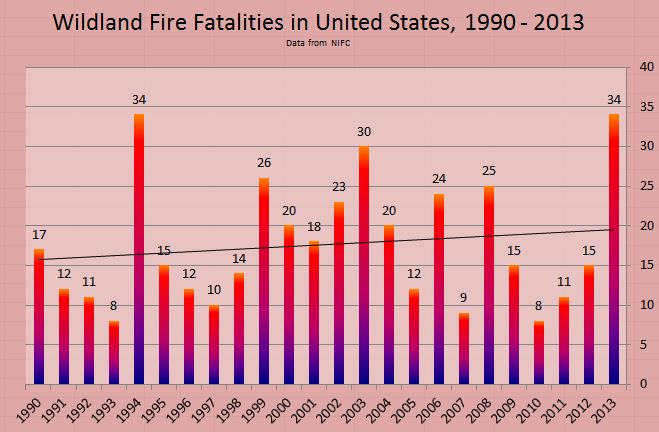During a presentation at the Large Fire Conference in Missoula this week, Bob Loveless, PhD, a retired structural firefighter, reported on his findings after studying the number of entrapments on wildland fires. Mr. Loveless has been an instructor in the Technical Fire Management program with the Washington Institute for over 25 years.
He compared entrapment rates before and after 2000, 1994 through 2013, thinking that the fatalities in the 1990s and the subsequent human factors studies led to a concentrated effort to increase safety in the U.S. federal wildland firefighter community beginning in 2000.
Mr. Loveless and his co-author, Adam Hernandez, a Captain with the Sierra National Forest’s Kings River Hotshots, estimated the annual rate of wildfire entrapments. They determined that since 2000, there has been a 70 percent reduction in the annual entrapment rate for all wildland firefighters, federal and other, after controlling for variation in annual acres burned, number of fires, and exposure time. A similar 76 percent reduction in entrapment rates was estimated for federal firefighters alone.
The researchers said other non-human factors changes since 2000, such as improved weather forecasting, may account for some of the reduction.
That is the good news.
However, in looking at the total number of fatalities, and not just from entrapments, as we did last November, the annual number, not adjusted for the acres burned, or exposure, or any other variable, has been increasing slightly over the last 24 years.

